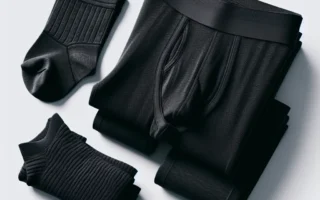The Origins of Sustainable Fashion: A Historical Perspective
Sustainable fashion has emerged as a significant movement in the industry, but its origins can be traced back to various historical developments. The concept of sustainability in fashion dates back to the early 20th century when concerns about environmental impact and social responsibility began to surface. Early efforts focused on promoting quality over quantity, emphasizing longevity and durability in clothing. The 1960s and 1970s witnessed a surge in eco-consciousness, leading to the rise of environmentally-friendly materials and production techniques.
Fast-forward to the late 20th century, and the detrimental effects of fast fashion became increasingly apparent. This prompted a reevaluation of fashion practices, paving the way for the modern sustainable fashion movement. Designers and brands began embracing ethical sourcing, fair labor practices, and eco-friendly materials, reshaping the industry’s approach to fashion production and consumption.
Key milestones, such as the establishment of the ecofashion movement and the introduction of sustainable fashion weeks, further propelled the sustainable fashion agenda. Today, sustainability has evolved from a mere trend to a fundamental shift in the entire fashion ecosystem, influencing consumer behavior, industry practices, and policies.
Sustainable Fashion: Ethical and Environmental Implications
Sustainable fashion has evolved from being just a trend to a full-fledged movement, with a strong emphasis on ethical and environmental implications. The shift towards sustainable fashion is driven by a growing concern for the ethical treatment of workers in the fashion industry and the environmental impact of traditional clothing production. This movement has led to an increased demand for transparency and accountability in the fashion supply chain, prompting brands to re-evaluate their sourcing and production practices.
Ethical implications of sustainable fashion include ensuring fair wages and safe working conditions for garment workers, as well as promoting diversity and inclusion within the industry. On the other hand, environmental implications focus on reducing the carbon footprint of fashion, minimizing waste, and utilizing eco-friendly materials and production processes. These efforts are aimed at mitigating the harmful effects of the fashion industry on the planet, such as water pollution, deforestation, and excessive waste generation.
As sustainable fashion continues to gain momentum, consumers, brands, and policymakers are increasingly recognizing the importance of aligning fashion with ethical and environmental values. This paradigm shift is reshaping the fashion industry, driving innovation in materials, manufacturing techniques, and consumer behaviors. Ultimately, the evolution of sustainable fashion reflects a deepening commitment to creating a more responsible and conscientious global fashion ecosystem.
The Future of Sustainable Fashion: Innovation and Impact
As the sustainable fashion movement continues to gain momentum, the future of the industry holds great potential for innovation and impact. With growing consumer awareness and demand for eco-friendly and ethically produced clothing, the fashion industry is being compelled to embrace sustainable practices on a larger scale. Designers and brands are increasingly focusing on developing innovative materials and production processes that reduce the environmental impact of their products.
One key aspect of the future of sustainable fashion is the development of new, eco-friendly materials. Innovations such as plant-based and lab-grown textiles, recycled fabrics, and biodegradable materials are paving the way for a more sustainable approach to fashion production. These materials not only minimize the use of harmful chemicals and reduce waste but also offer new aesthetic possibilities for designers.
Furthermore, technology is playing a pivotal role in the advancement of sustainable fashion. From 3D printing of clothing to the use of big data for supply chain transparency, technology is facilitating more efficient and eco-conscious production methods. Additionally, blockchain technology is being utilized to improve traceability and authentication, ensuring that products are genuinely sustainable and ethically produced.
Another significant trend shaping the future of sustainable fashion is the shift towards circular fashion systems. Embracing principles of reduce, reuse, and recycle, many brands are exploring innovative business models that prioritize longevity and end-of-life solutions for their products. From garment rental and resale platforms to take-back programs, these initiatives are disrupting the traditional linear model of fashion consumption and promoting a more circular economy.
In conclusion, the future of sustainable fashion is characterized by an ongoing commitment to innovation and impact. By prioritizing the development of eco-friendly materials, leveraging technology for sustainability, and embracing circular fashion systems, the industry is poised to make a meaningful difference in reducing its environmental footprint and creating a more ethical and responsible approach to fashion.



